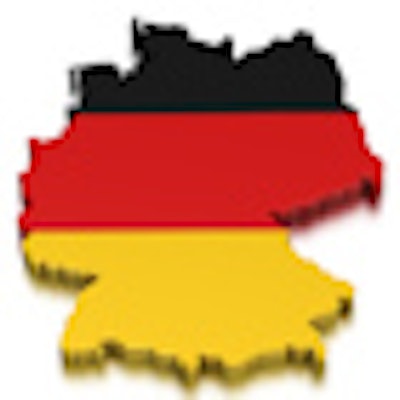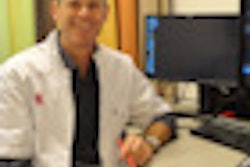
Given the scarcity of physicians and healthcare facilities in rural areas, German researchers are developing a financial model to calculate the most cost-effective option to deliver medical expertise to patients in need through telemedicine.
Because options for telemedicine technology can vary from 7,800 euros for a desktop system to 25,000 and 40,000 euros for an entire conference room configuration, making wise investment decisions for patient care is imperative, according to the study presented at ECR 2013.
"Our final goal is to create a standardized calculation for a case-compensation fee for medical teleconference setups," said lead study author Mark-Christopher Spoerl, a resident physician with the Institute of Diagnostic Radiology at Universitätsklinikum Greifswald.
Spoerl presented the study on behalf of the European Union-funded Telemedizin Pomerania, which includes the countries of Poland, Sweden, and Germany.
Physician availability
The research evaluated a telemedicine project in the northeast region of Brandenburg, which consists primarily of a rural population and a lower ratio of medical personnel compared with urban areas, such as Berlin. "Such rural areas lack the number of physicians and medical personnel, not in relation to the number of inhabitants, but in relation to covered area," Spoerl said.
For example, Berlin has 690 physicians per 1,000 sq km, compared with the districts of Barnim and Uckermark, which have approximately 4.6 and 1.2 physicians per 1,000 sq km, respectively.
The telemedicine program is based in Eberswalde, a small city near Berlin. Physicians at Werner Forβmann Hospital Eberswalde host a tumor teleconference to provide medical expertise to five other hospitals in Angermünde, Prenzlau, Wriezen, Strausberg, and Schwedt.
The Eberswalde doctors also interact with specialists at Hospital Berlin Neukölln, Dietrich Bonhoeffer Hospital Neubrandenburg, and Universitätsklinikum Greifswald. The greatest distance is between Eberswalde and Greiswald, which is 184 km.
The tumor teleconference takes place three times a week with an average of eight physicians attending the forum in Eberswalde and an average of 1.7 external hospitals and 1.4 external specialists attending the forum by video.
Attendees cover approximately 16.4 cases in 59 minutes, with an average of 13 cases including imaging demonstrations. There are 4.2 external cases per conference, which averages to approximately 164 external cases annually per hospital.
The network uses a variety of telemedicine technologies in conference rooms or specialists' offices; the equipment had a total acquisition cost of 367,400 euros.
Telemedicine option
Spoerl and colleagues then attempted to calculate the cost for one external hospital using two scenarios. The first scenario analyzed the teleconference option and assumed that each of the five hospitals would have to pay one-fifth of acquisition costs.
The telemedicine system itself would have a "run time" of five years, which would be equal to the amortization time. The fixed cost for acquisition or amortization is estimated at nearly 14,700 euros annually per hospital.
The study also created a medical specialist at a community hospital with an average gross salary of 5,500 euros, which was derived from the average compensation for such specialists at German hospitals.
"We also calculated that each external hospital would supply 2.5 cases per conference, and one external hospital would be represented by one doctor," Spoerl explained.
Among the variable costs in this scenario is compensation for an external physician for his or her preparation time, which the study estimated to be 15.95 euros per case. Compensation for time at the teleconference was estimated at 28.36 euros per case, with an average of 9.2 physicians attending each conference.
Total expenses for the telemedicine option were 21,947 euros per year.
Traveling physicians
In the second scenario, Spoerl and colleagues assumed an external physician would travel to the conference location to provide his or her patients with the same medical care as in the first scenario. "There would be no fixed costs, because there would be no telemedical equipment, but the expense for personnel would rise due to the external physician attending the conference," Spoerl added. The physician also "would lose time traveling, which would cost money of an average of 42 km between the external hospital and the conference."
Variable costs would include compensation for the external physician of 59.91 euros per case and travel costs of 9.94 euros. Teleconference physicians would be compensated at 28.36 euros per case for their time.
The total cost for the second option would be approximately 16,084 euros.
Volume comparison
A further comparison of the two scenarios found that the travel model would be less expensive based on 164 cases per year.
When Spoerl and colleagues increased the number of consultations to 272 cases per year, the teleconference option became less expensive than the travel model. "Further," he added, "if you increase the number of participating external hospitals, or if you extend the period of time of usage of the [telemedicine equipment], you could shift the relation between the travel model and teleconference model toward the teleconference model."
The results are "just a rough calculation," Spoerl emphasized. "We still have some work to do. For example, another hospital will be added to the system."
In addition, the researchers are contemplating a certain quality standard, which would mean three specialist doctors attending per external hospital, and taking into account that other staff, such as clerks or IT specialists, may have to be compensated under both cost-benefit models.



















